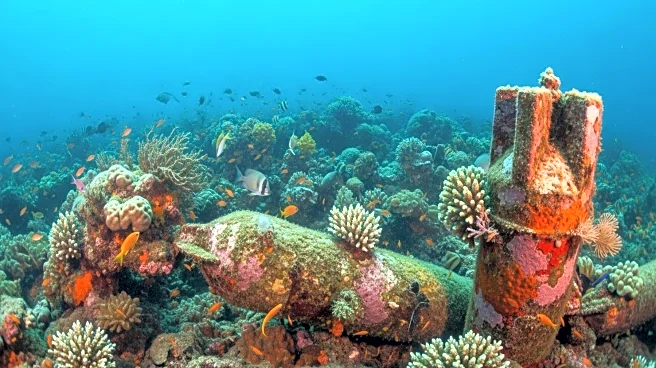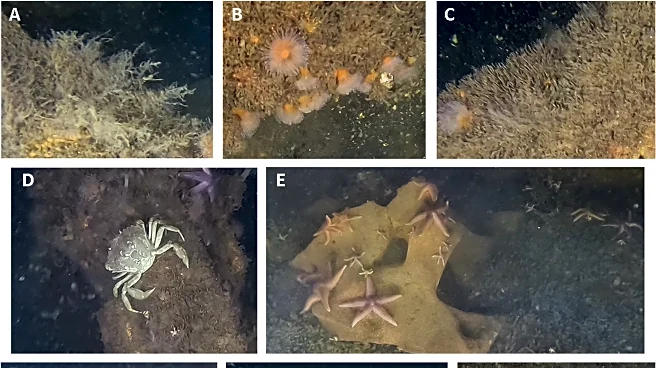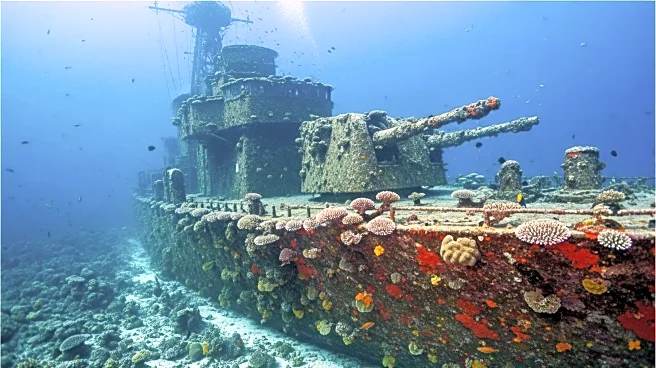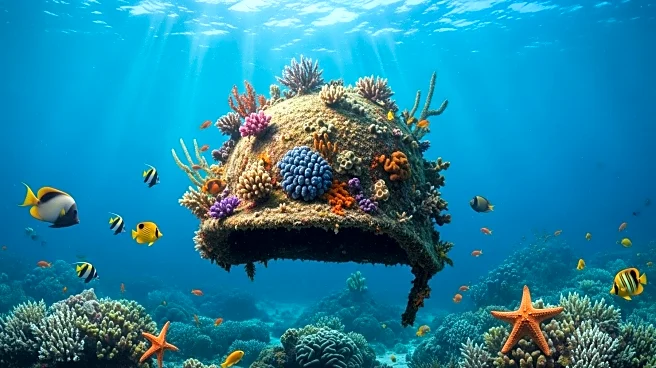What is the story about?
What's Happening?
Researchers have found marine life flourishing on World War II explosives in the Baltic Sea, challenging assumptions about the toxicity of these remnants. The study, published in the Journal of Communications Earth and Environment, reveals that crabs, worms, and fish are thriving on warheads, outnumbering creatures in surrounding seabeds. The discovery was made by an undersea submersible in Germany's waters, which contain approximately 1.6 million tons of discarded weapons. Despite the presence of chemical agents and explosives, the marine life appears to be drawn to the hard surfaces of the weapons, which provide anchoring points in an otherwise flat and sandy seafloor. The area is isolated from human activity due to the chemicals, creating a protective environment for the creatures.
Why It's Important?
This discovery highlights the resilience of marine life and its ability to adapt to polluted environments. It challenges existing perceptions about the ecological impact of underwater explosives and suggests that these sites could serve as unexpected habitats. The findings could influence environmental policies regarding the management of underwater munitions and contribute to broader discussions on marine conservation. Understanding how marine life interacts with these toxic remnants may also provide insights into the long-term ecological effects of warfare and pollution.
What's Next?
Scientists are now focused on calculating the contamination levels absorbed by the marine life from the explosives. Future research will explore the reproductive capabilities of these creatures and the potential for these sites to support sustainable ecosystems. The study opens avenues for further investigation into the ecological dynamics of polluted marine environments and the role of human activity in shaping these habitats.
Beyond the Headlines
The study underscores the importance of interdisciplinary research in understanding complex ecological phenomena. It also raises ethical questions about the legacy of warfare and its impact on the environment. The findings may prompt a reevaluation of how historical sites are preserved and managed, balancing ecological concerns with historical significance.
AI Generated Content
Do you find this article useful?















